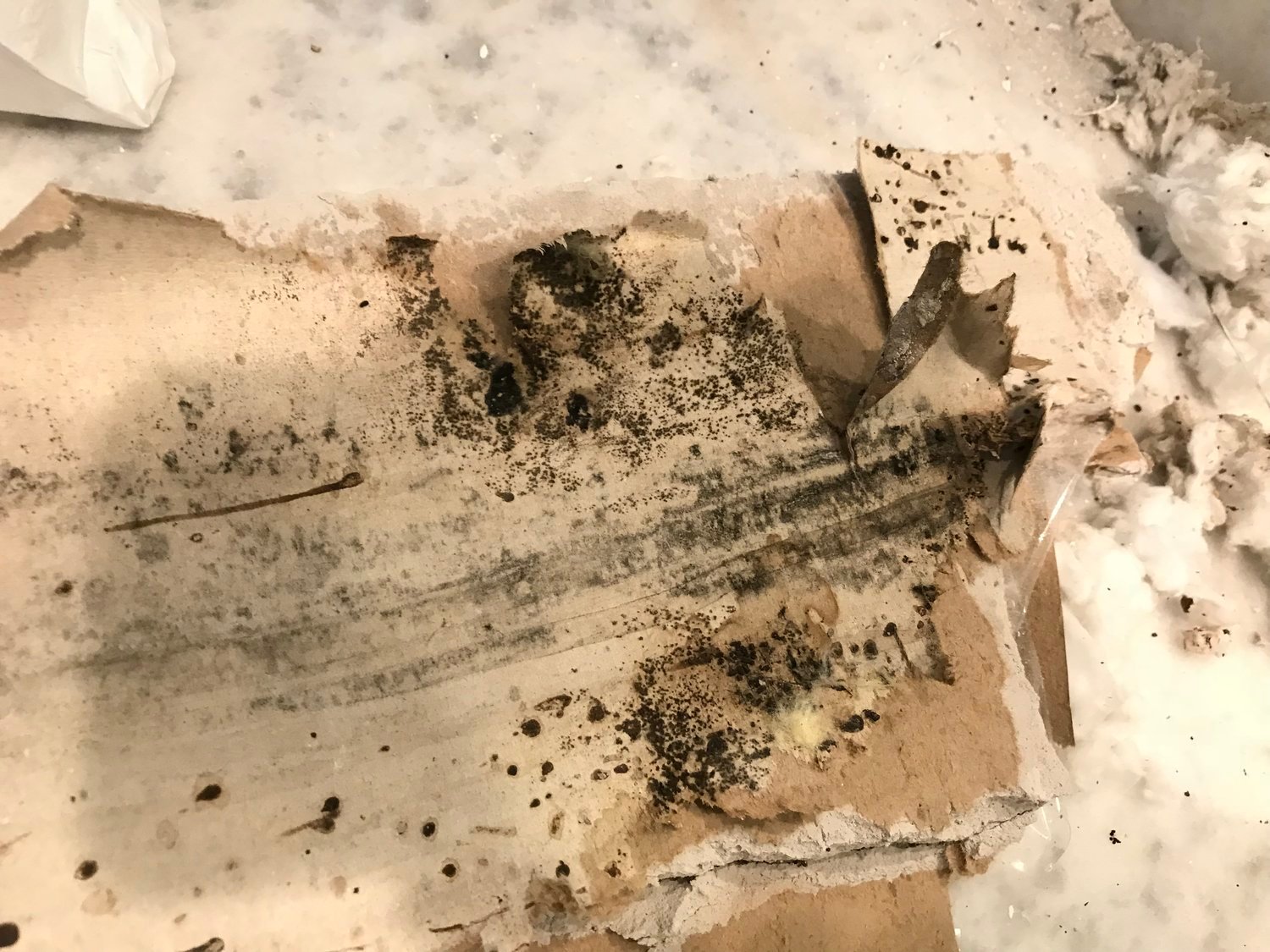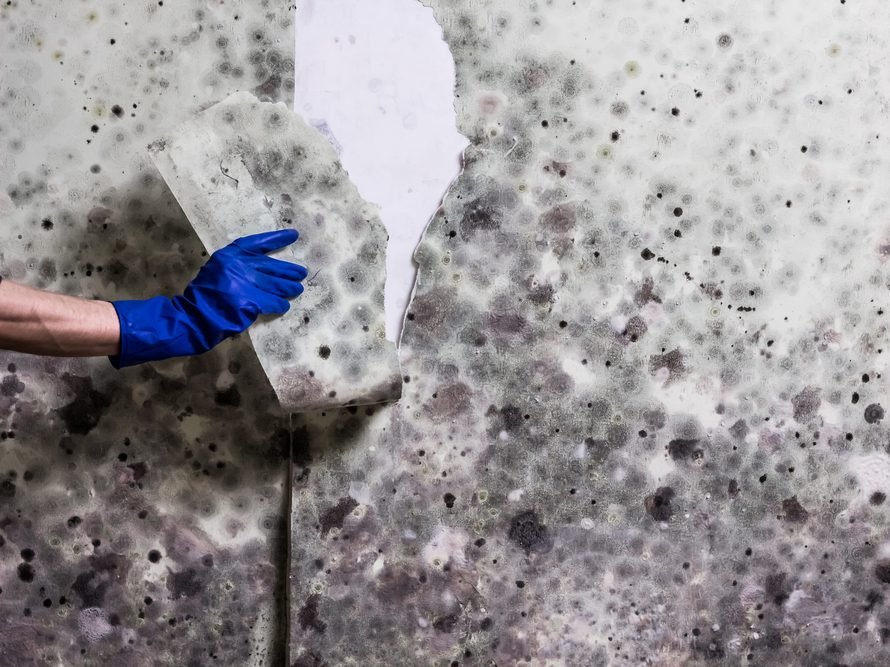Types of Mold Common in Los Angeles CA: Eagle View Remodeling
Los Angeles’s warm climate and occasional humidity provide an ideal environment for mold growth. Understanding the types of mold prevalent in this region is essential for maintaining a healthy home or business.
Stachybotrys Chartarum (Black Mold)
Overview: Stachybotrys chartarum, commonly known as black mold, is one of the most infamous types of mold due to its potential health hazards. This mold is characterized by its dark greenish-black color and slimy texture.
Health Risks: Black mold is known for producing mycotoxins, toxic compounds that can lead to various health issues. Prolonged exposure to black mold can cause symptoms such as chronic coughing, sneezing, headaches, and fatigue. In severe cases, it may lead to respiratory infections and even long-term health problems.
Common Locations:Black mold thrives in areas with constant moisture, such as bathrooms, basements, and areas affected by water damage. It often grows on materials like drywall, wood, and paper products. In Los Angeles, homes with poor ventilation and high humidity are particularly susceptible to black mold.
Prevention and Removal: Preventing black mold involves addressing moisture issues promptly, ensuring proper ventilation, and using dehumidifiers in damp areas. If black mold is detected, it must be professionally removed to avoid health risks.

Aspergillus
Overview: Aspergillus is a common type of mold with many species, some of which are more harmful than others. It appears in various colors, including green, white, and yellow, and is known for its powdery texture.
Health Risks: Certain species of Aspergillus can produce aflatoxins, potent carcinogens. Exposure to Aspergillus can lead to respiratory issues, allergic reactions, and asthma attacks. People with weakened immune systems or chronic lung conditions are particularly at risk.
Common Locations: Aspergillus is often found in air conditioning systems, HVAC units, attics, and on walls where moisture is present. It can also grow on stored grains and spices, making it a concern in homes and food storage facilities.
Prevention and Removal: To prevent Aspergillus growth, it’s essential to keep indoor humidity levels low, clean air conditioning systems regularly, and address any water leaks immediately. Professional mold remediation is recommended for significant infestations.
Penicillium
Overview: Penicillium is a fast-spreading mold that is often recognized by its blue or green color. It is known for its ability to spread quickly across surfaces, making it a common culprit in homes with water damage.
Health Risks: While some species of Penicillium are used to produce antibiotics, others can be harmful. Exposure to this mold can cause allergic reactions, asthma symptoms, and respiratory infections. It can also lead to more severe health problems for compromised immune systems.
Common Locations: Penicillium commonly grows in water-damaged buildings, on wallpaper, carpets, and insulation. It thrives in areas with high humidity or previous water damage, making it prevalent in Los Angeles homes that have experienced leaks or flooding.
Prevention and Removal: Preventing Penicillium involves promptly addressing water damage, maintaining low indoor humidity, and ensuring proper ventilation. Professional remediation may be necessary to remove the mold and prevent its return.


Cladosporium
Overview:Cladosporium is a mold that can be olive-green, brown, or black. It has a powdery appearance and can grow in both warm and cool areas, making it versatile and resilient.
Health Risks: Cladosporium is known to cause allergic reactions, such as respiratory issues, skin irritation, and eye infections. It is particularly concerning for individuals with asthma or other respiratory conditions.
Common Locations:This mold is often found on wood surfaces, fabrics, and inside HVAC systems. In Los Angeles, it can thrive in poorly ventilated areas or on materials exposed to moisture.
Prevention and Removal: To prevent cladosporium, keep indoor areas dry and well-ventilated, and clean HVAC systems regularly. If cladosporium is found, professional mold removal is recommended, especially in areas where it has spread extensively.
Alternaria
Overview: Alternaria is a mold typically dark green or brown with a velvety texture. It is one of the most common molds found indoors and outdoors, especially in areas with high moisture.
Health Risks: Exposure to Alternaria can cause allergic reactions, asthma symptoms, and, in severe cases, hypersensitivity pneumonitis. It can also exacerbate symptoms in individuals with pre-existing respiratory conditions.
Common Locations: Alternaria is often found in damp areas such as showers, sinks, and window frames. It can also grow on houseplants and soil, making it a common household mold in Los Angeles.
Prevention and Removal: Preventing Alternaria involves controlling moisture levels in the home, using dehumidifiers, and promptly addressing leaks. If Alternaria is found in significant quantities, professional mold remediation is advisable.


Chaetomium
Overview: Chaetomium is a mold that often changes color as it matures, starting from white and turning dark gray or black. It has a cotton-like texture and is frequently found in water-damaged environments.
Health Risks: Chaetomium can cause skin and nail infections, respiratory issues, and, in some cases, neurological damage. It is especially dangerous for people with weakened immune systems or chronic health conditions.
Common Locations: This mold is commonly found in water-damaged buildings, particularly on drywall, wood, and other cellulose-rich materials. In Los Angeles, homes that have experienced flooding or leaks are at higher risk of Chaetomium infestation.
Prevention and Removal: To prevent Chromium, it’s crucial to address water damage quickly, keep humidity levels low, and ensure proper ventilation. If Chromium is detected, professional mold removal is recommended due to its potential health risks.
Ulocladium
Overview: Ulocladium is a dark mold, typically black or olive-brown. It is closely related to Stachybotrys (black mold) and often appears in the same environments.
Health Risks: Ulocladium can cause allergic reactions, particularly in people with pre-existing respiratory conditions. Symptoms may include sneezing, coughing, and itchy eyes.
Common Locations:This mold thrives in areas with high moisture, such as kitchens, basements, and bathrooms. In Los Angeles, homes with poor drainage or frequent leaks are especially vulnerable to Ulocladium.
Prevention and Removal: Preventing Ulocladium involves maintaining low indoor humidity, addressing leaks promptly, and ensuring proper ventilation. Professional remediation is advised if the mold has spread or if household members experience health symptoms related to mold exposure.


Fusarium
Overview: Fusarium mold can appear in various colors, including pink, white, and reddish hues. It is resilient and can grow in both dry and wet conditions.
Health Risks:Fusarium can cause infections in the eyes, skin, and nails, as well as respiratory issues. It is particularly dangerous for people with compromised immune systems, as it can lead to more severe infections.
Common Locations: Fusarium is often found in water-damaged areas, on carpets, and in humidifiers. In Los Angeles, it can also grow on plants and soil, making it a potential indoor and outdoor threat.
Prevention and Removal: Preventing Fusarium involves controlling moisture levels, using air purifiers, and promptly addressing any leaks or water damage. Professional mold remediation is recommended for significant infestations.
Acremonium
Overview: Acremonium is a slow-growing mold that initially appears as a small, moist substance but later turns into a fine, dry powder. It can range from white to gray, pink, or orange.
Health Risks: Acremonium can lead to serious health issues, including infections in the bone marrow, lungs, and immune system. It is hazardous for individuals with weakened immune systems or those undergoing chemotherapy.
Common Locations:This mold is often found in areas with condensation, such as humidifiers, cooling coils, and window seals. In Los Angeles, homes with high humidity or poor ventilation are more likely to harbor Acremonium.
Prevention and Removal: To prevent Acremonium, keep indoor areas dry, maintain low humidity levels, and clean humidifiers and HVAC systems regularly. If Acremonium is detected, professional removal is necessary due to its potential health risks.


Mucor
Overview: Mucor is a fast-growing mold that usually appears in white or gray and has a fluffy texture. It is known for its ability to spread quickly, especially in environments with high humidity.
Health Risks: Mucor can cause zygomycosis, a rare but severe infection affecting the lungs, brain, and sinuses. It is hazardous for people with diabetes, cancer, or weakened immune systems.
Common Locations:Mucor is commonly found in HVAC systems, ductwork, and other areas with high humidity. In Los Angeles, it is often seen in homes with poor ventilation or those that have experienced water damage.
Prevention and Removal: Preventing Mucor involves maintaining low humidity, ensuring proper ventilation, and cleaning HVAC systems regularly. If Mucor is detected, professional mold remediation is strongly recommended due to its rapid spread and potential health risks.
Final Thoughts
Understanding the different types of mold common in Los Angeles is crucial for protecting your health and home. Every kind of mold presents unique challenges, and prompt, professional intervention is often necessary to ensure safe and effective removal. Maintaining proper humidity levels, addressing water damage quickly, and ensuring adequate ventilation can significantly reduce the risk of mold growth in your home.
why choose us?
Get Ready to Transform your Home With Us.
Fill In Your Information To Receive a Free Estimate
At Eagle View Remodeling, we’re proud to serve as your provider of exterior remodeling Los Angeles. Throughout our time in business, we’ve been grateful for our past clients who have reviewed our services.
Call us Today
We improve your home’s curb appeal with concrete or paved driveways, fireplaces and pits, retaining walls, walkways and garden pathways, fountains, and much more. What are you waiting for? Call now and get a free estimate from our experts.
